page 6
(Using a philosophy of "threes" as a tool
for dissection and comparative analysis)
http://threesology.org
Anat., Bio. Phys. Researchers as of 3/17/2021
Pages in this series:
| 1 | 2 | 3 | 4 | 5 | 6 | 7 | 8 | 9 | 10 | 11 |
Let's start this page with a few links to different perspectives of the "threes" phenomena.
- Biology as Poetry: 3-to-1 ratio (By Dr. Stephen T. Abedon)
- (Tricyclopedic) Book of Threes (By Michael Eck)
- List of Threes in human anatomy (By Dr. McNulty)
- Phenomenology - Threefoldness (By Tom Van Gelder)
- "The Third Way of Evolution"(By James Shapiro, Raju Pookottil, and Denis Noble)
Let us ask a simple question: Do "threes" actually occur in the subject matter under study, or are they projected outward from some internal model we are predisposed to? If a particular pattern crops up again and again in different subjects by different people, why are so many people using the same pattern(s) when there are others that could be used? Granted we can "read into" information one or another pattern that we may have some interest in establishing the presence thereof to support some inclination, but why do so many see the same pattern(s) while others do not, or if they do, do not attach any value to it... unless it provides some practical advantage at a given point in time? However, others see the "threes" idea as an adventure giving details of different escapades.
The following image on mutations might well be used by some to offer as evidence against the usage of a "threes"-based philosophy being offered as a tool of dissection and examination of information from different subject areas, much less anatomy, biology and physiology alone, but they nonetheless represent a counting sequence and a limitation... or "conservation" of mutations which have stabilized. In other words, because they do not see every animate creature having "three" toes, their logic creates an algorithm that using "three" as a defining metric is an unstable tool of application, though they might agree it can be used as an elementary frame of reference when seeking some general information for a basic numerical analysis. They do not see the "three" as a type of third base, so to speak, which enables them to develop a perspective that differs from those who play different positions in different fields of subject in which respective perceptions are adopted according to a given position. In other words, the perception of someone in a batter's box is different from an outfielder's just as it is from someone selling concessions and seeing the game from the vantage point of where they are in the grandstand. Their relative position in or out of the "game" of a given subject is not being viewed as if they were in the different positions because they have not taken the time to view from the different points of relative placement. Far too many attempt to claim ownership of a given position as if it were some self-possessed entitlement upon which to place a personalized emblem as some due to the entry way onto their property, or companies due when selling a product... much less religions do to a building or manuscript or governments do by way of its various formulas of practiced patriotism. In short, the "three" is not THE defining characteristic, it is part of a defining characteristic that can provide a tether in which to explore... like bread crumbs, trail marks, or an internalized compass.
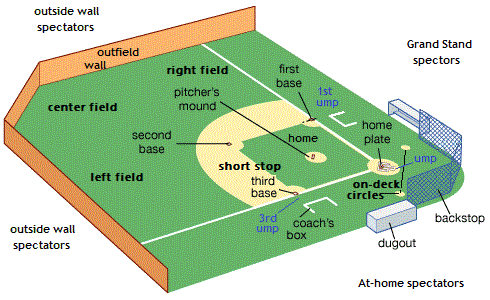
Do you see three outfield positions or three-lettered game statistics? Do you see three bases and one Home plate (which is a 3 to 1 ratio)? Have you viewed a game from outside the wall, the grandstand, or at home via television or radio? Have you watched a game from a press or commentators box, concession sales in the bleachers or dugout? Have you played a game from the three field bases and short-stop (which is another 3-to-1 ratio)? Do you even see the alternative "threes" other than the numerically designated 1st, 2nd and 3rd base? Have you stood where a 1st base coach, 3rd base coach and team coach have? And then have you used this simple analytical tactic to apply to other sports and various subject matters? Have you tried to place different subjects into a three-bladed blender just to (experimentally) see what concoction is derived? Have you tried to bake it, fry it, or stew it? If so, then you are a beginning novice at using "three" as an analytical tool... which invariably encounters its own many travails once you begin attempting to convey your findings to others who are steeped in the methodology of conventionalisms which may be linked to their ability to make a living and establish a career from accepted models of single-mindedness given a justified morality by applying a three-word monogram designated as "It's Just Business". Or are you one of those who thinks their later life is defined by what position they played (or didn't play) in baseball or some other childhood pastime they never actually grew out of?
Simply put, the "three" is a recurring model of thinking found in various subjects that may be aligned with other patterns that do not necessarily exhibit a definitive numerical value associated with an elementary learning of numbers and alphabet. You can't apply a kindergarten's training course of number and letter identification to abstractions. While there are basic configurations, these can become muddled by truncations, overlappings and variable substitutions (such as sounds being used instead of visual clues or some other sense in place of another). In order to see the "three" in its different configurations, one needs to develop a geometry, algebra and calculus beyond the rudimentary indulgences of counting serially as in the 1-2-3 Natural number set. The "three" may occur out of order as a Cardinal number, and may rely on your ability to distinguish its actuality from an inclination to over-value its presence when it doesn't really exist except for in one's own oriented mind of interest. If you can only see the "three" by counting 1, 2, 3,... you may think it doesn't exist if there is no numerical label; or some significant other whom you respect is unable to see what you can but you deny your own perceptions in order to go along with the views of some authoritatively-designated perception as part of a learned socialization process. Authority likes to keep people dumb and naive, because control and manipulation are easier this way. Authority often has many insecurities for which they go out of their way to mollify by convincing others to help support them to accept beliefs they made up by way of constructed personal fantasies to validate their own existence.
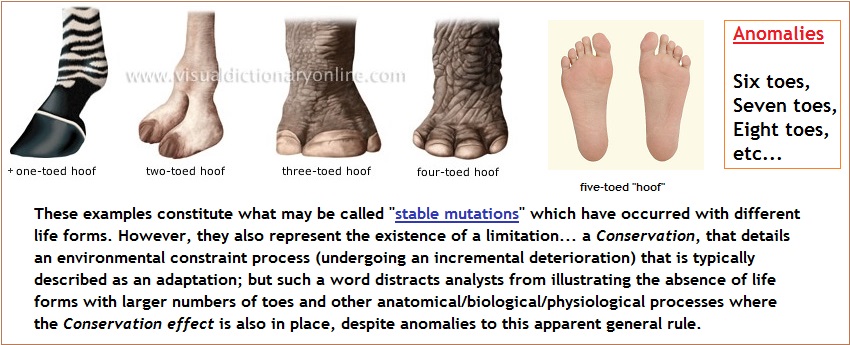
Again, as mentioned in the (not yet published) introduction to this series, the above enumerated series of examples represent a pattern-of-one. Dividing the animate portion from the separated distinctions of six, seven and other anomalous occurrences of mutation, provides us with a pattern-of-two. The "three" is acknowledged when we take into account the absence of higher enumerated examples, or the exception there of if someone were to experience on occasion of perceiving such. In other words, there is a stark absence of enumerated examples with higher values (10, 20, 60, 400, etc.,) of mutation. Even if such "highly unstable" mutations occur, they are so infrequently encountered as to be absent even from being mentioned in text books, because so-called "experts" do not think in terms of a "threes" convention without indulging in the convention of thinking they might be accused of participating in a type of skeptical numerology viewed as a pseudo-science or primitive philosophy. They are eager to list what is there, what can be provided with evidence for, yet the lack of evidence is another type of evidence of a stable recurrence. Analogously, the void of outer space presents us with the absence of planets, asteroid, meteorites, etc... Something has, or is causing most of the Universe as we know it to be filled with an absence. In terms of astrophysics, we have material which are relatively stable, some that are unstable, and others that are highly unstable... in terms of time, distance and application with regard to occurrences and anomalies of space and its applied scale that must be used just as one has to think of geological events within its own model of representative time events.
 Six Toes |
 Eight Toes |
| (Notice I have no examples for more than eight toes... though they may exist but aren't photographed... or at least not compiled in the image catalog of any internet site. Such anomalies may occur frequently enough to be placed into some medical text, but the information is not then transcribed to the internet because the bulk of the internet is configured towards making money than providing information to enhance the knowledge and progressive well-being of humanity.) | |
By realizing the fact that the "3" value is both stabilized (due to its repeated occurrence in multiple subjects) and yet exists in the presence of other patterns as well, one also notices the existence of an overall limitation... which ultimately produces the category of absence, such that it becomes the largest representative example of all examples, like the void of outer space is the largest example of the Universe and must be a part of any Astro-physics equation. In other words, we do not have stable mutations exhibiting large number values, though one might want to naively offer the legs of millipede or centipede as exceptions (of we were to apply the topic of legs to a larger discussion of comparative anatomy). But stabilized exceptions do not refute the idea, they only convince us that larger number values are possible, but something is keeping most life forms to exhibit lower numerical values in their makeup... just as there is a conservation in an established "triplet" coding system of DNA and RNA.
If something has the means to create constraint, it also has the means to force a compliance to adapt to deteriorating conditions and view the adaptations as normal and natural... yet they are merely examples of what may be referred to as a slave mentality incorporated into overall biological processes to which human thoughts and beliefs must abide, thus presenting humans with a recurring theme of social institutions (such as businesses, governments and religions) who are themselves variable expressions of stable, unstable, highly unstable events... such as the eventual demise of once great economic activities, national governments and cross-cultural religious practices. In other words, our views... our beliefs, are little more than rationalizations to coincide with an adaptation to deteriorating environmental conditions. When those conditions reach a given tipping point, the demise of a practice is ensured... like the fall of previous religious practices (human sacrifice), government practices (such as an economy based on slavery), and oh so many different kinds of commercial endeavours (such as wooden ship building, buffalo hide processing, sword making, etc...).

Stable, Unstable, Highly Unstable:
- Stable: Do not undergo observable decay... or decays over an extended period of time in most circumstances. (weeks, months, years, decades, centuries)
- Unstable: Undergoes a rate of observable decay over a short measure of time in most circumstances. (seconds, minutes, hours, days/weeks)
- Highly Unstable: Decays at an accelerated rate in most circumstances, that may or may not be easily measurable with current instrumentation. (Fractions of a second)...
With respect to decay typically assigned to the field of particle physics, the idea of stable, unstable and highly unstable mutations on a anatomical, biological and physiological level can be understood to some degree as a model with parallels:
More than 200 subatomic particles have been detected—most of them highly unstable, existing for less than a millionth of a second—as a result of collisions produced in cosmic-ray reactions or particle-accelerator experiments. Source: "Subatomic Particle." Encyclopædia Britannica Ultimate Reference Suite, 2013. Radioactive Decay The nuclei of most everyday atoms are stable—that is, they do not change over time. This statement is somewhat misleading, however, because nuclei that are not stable generally do not last long and hence tend not to be part of everyday experience. In fact, most of the known isotopes of nuclei are not stable; instead, they go through a process called radioactive decay, a process that often changes the identity of the original atom. In radioactive decay a nucleus will remain unchanged for some unpredictable period and then emit a high-speed particle or photon, after which a different nucleus will have replaced the original. Each unstable isotope decays at a different rate; that is, each has a different probability of decaying within a given period of time (called the decay constant). A collection of identical unstable nuclei do not all decay at once. Instead, like popcorn popping in a pan, they will decay individually over a period of time. The time that it takes for half of the original sample to decay is called the half-life of the isotope. Half-lives of known isotopes range from microseconds to billions of years. Uranium-238 (238U) has a half-life of about 4.5 billion years, which is approximately the time that has elapsed since the formation of the solar system. Thus, the Earth has about half of the 238U that it had when it was formed. There are three different types of radioactive decay. In the late 19th century, when radiation was still mysterious, these forms of decay were denoted alpha, beta, and gamma.
When a radioactive nucleus decays, it often happens that the daughter nucleus is radioactive as well. This daughter will decay in turn, and the daughter nucleus of that decay may be radioactive as well. Thus, a collection of identical atoms may, over time, be turned into a mixture of many kinds of atoms because of successive decays. Such decays will continue until stable daughter nuclei are produced. This process, called a decay chain, operates everywhere in nature. For example, uranium-238 decays with a half-life of 4.5 billion years into thorium-234, which decays in 24 days into protactinium-234, which also decays. This process continues until it gets to lead-206, which is stable. Dangerous elements such as radium and radon are continually produced in the Earth's crust as intermediary steps in decay chains. Source: "Atom." Encyclopædia Britannica Ultimate Reference Suite, 2013. |
Similarly to changes which occur with particle decay, humanity will undergo change as its existence is "halved" again and again. Determining the rate of decay will assist us in determining what type of creature humanity will decay into. Necessarily so, we must ask where in the "half-life" process is humanity at this moment in its history?
And yes, all three of the aforementioned mutation groups may be viewed as "stable" because they exist as three variations... and these variations are dependent on the criteria of the subject which is being observed. For example, "time period relevancy" must be viewed in the context to which it applies; whether we are speaking of the life-cycle of a fruit fly, geological processes, or the duration of a star. This is one of the reasons for viewing the deteriorating effects of planetary phenomena in the context of human existence and not the time period directly attributable to inter-planetary processes. For example, if we were to view humanity as an experimental subject like a fruit fly, we would be focused on the events of effected change within the time-span... the frame work of humans.
However, we do not necessarily conceptualize about larger groups of variations because there is an imposed limitation that we abide with as part of a survival imposition placed on us by the deteriorating environment. In other words, a fruit fly may not think about inter-generational events because it is preoccupied with self-interests of survival within its relative span of life; like so many individuals, businesses, governments, religions, sports teams, entertainers, cartels, etc., are. There is an inclination for us to relate ideas in a conserved manner, though some may think about intelligence and imagination as being environmentally constrained to exhibit limitations due to an imposed conservation of effect— in response to a decaying environment as a method of trying to maintain some semblance of equilibrium... or stableness. As the environment changes, so do the requirements for maintaining some relative semblance of equilibrium. Whereas a fruit fly may in some ways acknowledge that is constrained in a petri dish or jar, these are not the labels nor rationale it employs as a "big picture" consideration. "Rationalized adjustments" are made to effect the best possible level of equilibrium one is practiced to put into place. One's relative equilibrium will suffer along with one's lack of practiced survival abilities or a means to make useful self-corrections, though all species on Earth have limitations as to how and what they can adapt to.
Humanity is like many different kinds of fruit (vinegar) fly hovering about a rotting fruit called Earth, and is— for the most part... oblivious of that beyond its ability or desire to seek out other pieces of fruit unless it is tethered to ideas similar to those which Christopher Columbus and his supporters had embraced in venturing forth. Indeed, many humans are so constrained in their thinking that they refer to Earth as "Mother Earth", but do not take into consideration that all mothers eventually age and die... thus leaving humanity with no alternative but to sever the umbilical cord or apron strings... or become so dependent that it will experience a debilitating separation anxiety when it becomes aware that humanity must leave Earth or perish as a species. Hence, in order to forego the problematic issues of psychological and physiological dependencies (such as those due to an interruption in circadian rhythms), the Earth's education, television, radio and motion picture systems must be used to instill the repetition of psychologically preparing generations for the need to depart the Earth, its solar system, and perhaps even its galaxy.
Politically speaking, in order for a maggot such as Trump to prosper, a city such as New York (alternatively described as The Big Apple, Fun City, or Gotham), must be rotting from the inside out at its deepest core. Similarly, the core of the Earth may be undergoing changes that are not being detected because humans do not have a model which describes changes in this manner.
And like the fruit fly known as the Drosophila melanogaster which is used to study population genetics, one might view humanity as being subjected to such an experiment and is unaware of its participation (as a species)... just like so many flies are. (It is difficult for many to see how a fly might be conscious of its experimenter, even though some humans claim theirs is called God, and yet (like Einstein who believed in a deterministic mechanism for the Universe), some researchers adamantly refuse to consider that unexpected serendipitous experimental events do occur with all life forms on Earth... like someone throwing loaded dice which frequently land on the number three by way of different combinations in which one or more dice are alternatively used. Just because two dice are used by humans, doesn't mean Nature must abide by this binary convention... despite its many applications and occurrences in different subjects. Seeking consistencies or "Natural laws" may be due to an inclined physiological attempt to maintain some semblance of equilibrium within an incrementally deteriorating planetary system.
As the Earth and its relationship with the Sun and Moon continue to deteriorate (rotten), there will be an increase in those human-linked life forms that are enabled to take advantage thereof... like an infestation of maggots appearing more and more in "respectable" organizations and institutions.
If the correlation between atomic particles and biological mutations is a reliable one, even as a metaphor, then the stable particles being perceived today may not have been the stable particles of the past... and nor may they be in the future. If the stable mutations of biology that we see today were once unstable occurrences that were established by incremental changes in the environment, then we might want to consider that the unstable or even highly unstable mutations of today might well be in line to be stable mutations in the future, depending on the rate and type of decay that will occur. Whether the comparison has more value than a general correspondence may not be known until there is an effort to catalog changes that may be related to the decay in the planetary environment within the immediate territory of the Earth, and its interactions with the Sun and Moon. A change in the number or relative proportions of enumerated occurrences in one, another or all subjects, may well signal a change in the environment for the better, or for the worse.
For example, if we take the subject of religion and made an attempt to catalog all instances in which incorporated ideas used patterns-of-one, two, three, etc., and noticed changes in quantity and proportion, we might well be measuring a change in human cognition due to changes in brain activity related to environmental influences based on a rate of decay that is being overlooked... or an environmental condition such as the presence of a wide-spread poison (like leaded gasoline attributed to an increase in criminal behavior) or too much salt, or lack of a particular nutrient composition. Interestingly, the advent of the Christian idea of the "trinity" in time and place and usage, is not being related to developmental cognitive changes in humanity related to some environmental consideration. For example, is it a "stand alone" original occurrence, or a by-product of some other religion's idea... thus indicating cultural transference and adoption due to environmental changes brought on by cultural delimitation of language influences... or had the brain of humans in a given setting experienced a developmental change?
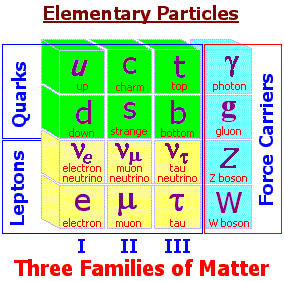
While the perspective of limitation is important, we should take a moment to view the frequency of mutation related to the presence of atomic particles because of their underlying importance to biological activity, since there exist three general states of occurrence called "stable, unstable, highly unstable", which can refer to their rate of decay. No less, along with this three-patterned criteria, one might also include the presence of the idea concerning three families of fundamental particles, though both ideas may be little more than the manufactured perceptions of humanity in a given epoch of environmental decay. And if we include the presence of force carriers, we can see the configuration of a three-to-one ratio. If we look at the stable forms of different toe quantities as having developed according to the state of the Environment in an isolated system, and that a decaying environment may well influence a change in what types of stable life forms are developed, this may then be a representative model of what will take place on the atomic particle level. In other words, the stable forms may eventually become unstable due to an incremental decay in the environment, and the less stable and/or highly unstable particles thus become more stable. This would then constitute a new system of particle physics as it would a new system of biology.
A decaying environment will alter our biology which affects our brains and thus perception, all of which may have a predictability of what life forms and atomic particles we can expect to have in the future, that is if the rate of decay in the overall planetary environment retains a constant... though a plottable inconsistency would have its own predictability as well. Just because something isn't there doesn't mean nothing isn't there, since "nothing" is something, like the void of space... sometimes referred to as black matter for which some have postulated the idea of a particle to explain the presence of so much nothingness, along with an idea that explains all disparate ideas involving fundamental particles. However, all the ideas are not being viewed as patterns or patterns of patterns or patterns of patterns of patterns, etc... When an effort is made to incorporate all ideas under the rubric of a "Theory of Everything" (biological: TOE) or "Grand Unified Theory" (biological: Gut), the patterns being spoken of are not being viewed as a system of patterns because the language being used to express ideas conceals the presence of personalized egos which get in the way of analyzing all the ideas as patterns of a system of patterns related to our anatomy, biology and physiology in an incrementally deteriorating environment.
Basic Ideas are repeated and accredited according to the subject in which they occur, but ideas as basic patterns respective of a biological organism subjected to an incrementally deteriorating environment which exhibits those patterns as a tell-tale sign of the parameters of the deterioration, are not taken into account. The underlying patterns exhibited in ideas is a graph, a map, a fingerprint indicating change along a path of incremental deterioration, yet the distance covered within and from one generation to the next is mistakenly interpreted as a progression that has been variously referred to as a trail leading to some utopia, paradise, advancement, achievement, Communism, Socialism, peace, tranquility, progress, etc., instead of being that which exemplifies a dog chasing its own tail or criss-crossing one's footsteps over and over again that have become obscured by relabeling that involves an attempted comprehensibility (like developing a Theory of Everything synonymous with reaching a mountain's summit to define a presumed preeminent quality). How many more people and other animate life forms must die before humanity realizes the futility of its own species so long as it remains in global/planetary system which effects limitations in concert with its incremental deteriorations that humanity can remove itself from?
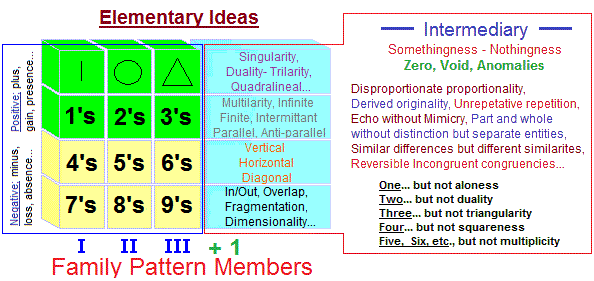
Let's take a look at a fairly typical review of ideas revolving around the Grand Unified Theme, in order to witness a discussion about attempts to incorporate different patterns, but that all the patterns are not being viewed as a system of patterns within a given subject whose vocabulary and ideas may be insufficient for addressing the question because it does not involve an appreciation of dealing with the available information in the present state of human cognition in an incrementally deteriorating environment. (Notice the article speaks of varying "number" patterns, but not that the patterns-of-numbers (or patterns-of-ideas) as a pattern itself that needs to be defined in the presence of an overall limitation). The image to the right lists some basic patterns but not all patterns in which they may be applied. Nonetheless the idea is instructive on a basic level. It helps to identify the presence of how ideas are valued in that we value some ideas over others based on preferences born of respective used for validating our claims, and not that all patterns reflect a biology undergoing change in an incrementally deteriorating environment. This idea, as a pattern of cognition, is an applicable variable that needs to be considered in our equations... regardless of subject.
A theory of everything While GUTs (grand unified theories) resolve some of the problems with the Standard Model (of physics), they remain inadequate in a number of respects. They give no explanation, for example, for the number of pairs of quarks and leptons; they even raise the question of why such an enormous gap exists between the masses of the W and Z bosons of the electroweak force and the X bosons of lepton-quark interactions. Most important, they do not include the fourth force, gravity. The dream of theorists is to find a totally unified theory—a theory of everything, or TOE. Attempts to derive a quantum field theory containing gravity always ran aground, however, until a remarkable development in 1984 first hinted that a quantum theory that includes gravity might be possible. The new development brought together two ideas that originated in the 1970s. One was supersymmetry, with its abilities to remove nonphysical infinite values from theories; the other was string theory, which regards all particles—quarks, leptons, and bosons—not as points in space, as in conventional field theories, but as extended one-dimensional objects, or "strings." The incorporation of supersymmetry with string theory is known as superstring theory, and its importance was recognized in the mid-1980s when an English theorist, Michael Green, and an American theoretical physicist, John Schwarz, showed that in certain cases superstring theory is entirely self-consistent. All potential problems cancel out, despite the fact that the theory requires a massless particle of spin 2—in other words, the gauge boson of gravity, the graviton—and thus automatically contains a quantum description of gravity. It soon seemed, however, that there were many superstring theories that included gravity, and this appeared to undermine the claim that superstrings would yield a single theory of everything. In the late 1980s new ideas emerged concerning two-dimensional membranes or higher-dimensional “branes,” rather than strings, that also encompass supergravity. Among the many efforts to resolve these seemingly disparate treatments of superstring space in a coherent and consistent manner was that of Edward Witten of the Institute for Advanced Study in Princeton, New Jersey. Witten proposed that the existing superstring theories are actually limits of a more-general underlying 11-dimensional “M-theory” that offers the promise of a self-consistent quantum treatment of all particles and forces. Source: "Subatomic particle." Encyclopædia Britannica Ultimate Reference Suite, 2013. |
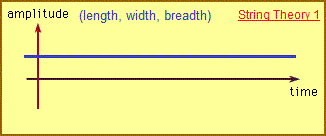 |
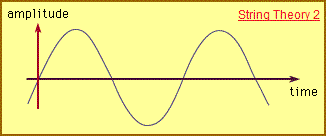 |
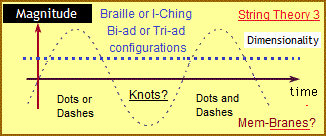 |
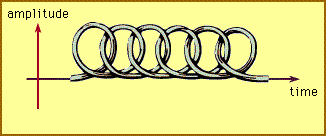 |
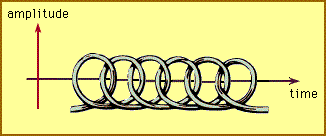 |
 |
Page initially created: Saturday, 12-August-2017... 3:40 AM
Initial Posting: Thursday, 07-Sept-2017... 5:23 PM
Updated Posting: Sunday, 13th-May-2018... 7:01 AM
Most Recent update: Monday, 13th, March 2023... 11:03 AM
Herb O. Buckland
herbobuckland@hotmail.com